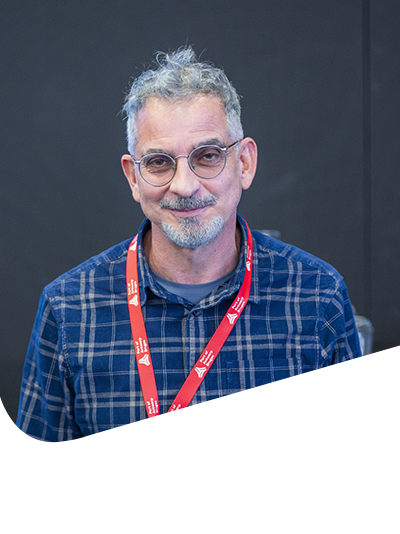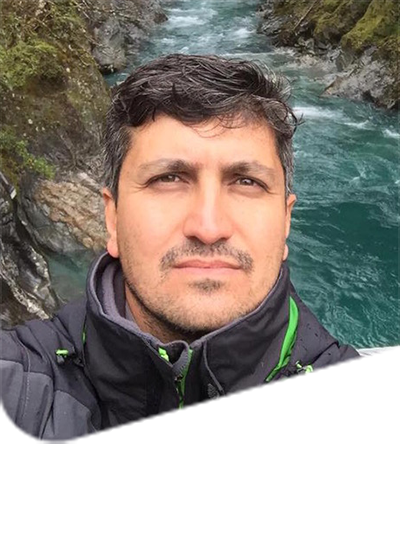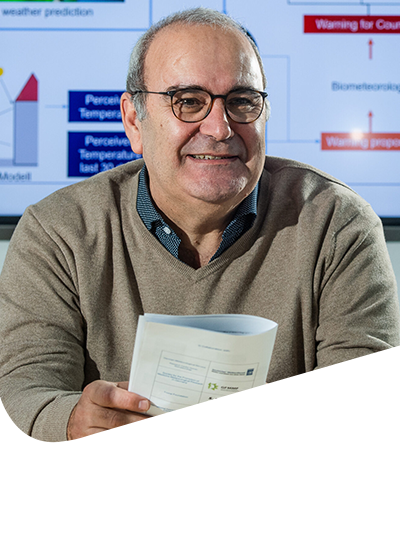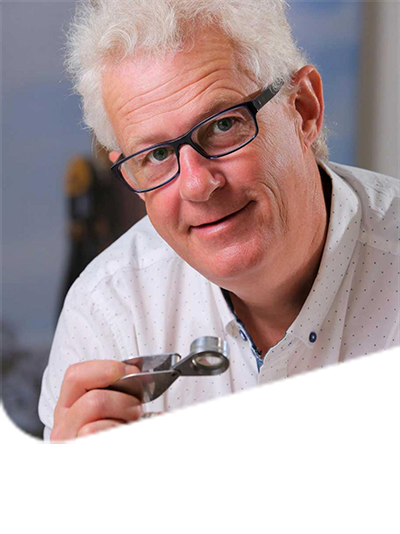PLENARIES
The MedGU-25 Organizing Committee has invited and also received requests from renowned distinguished scientists from over the world to offer plenaries on cross-cutting themes of earth sciences. We wish to express gratitude to those who have agreed to serve as plenary speakers (see Scientific Program):
Plenary 1: High Resolution Gridded Datasets for Greece: From Daily Observations to Downscaled Climate Projections
High resolution climate information is an essential component of a country’s comprehensive framework for responding to the risks of climate change and for the implementation of its adaptation policy and strategies. However, the available state-of-the-art climate change modeling experiments (i.e. CMIP6) have horizontal resolutions of about 100km. This resolution is too coarse for supporting adaptation planning and decision-making at the local/regional scale, as local climates in Greece are highly variable due to its complex topography. CLIMADAT-hub bridges the gap between the climatic information available and the information needed/suitable for assessing climate risks at the local scale, by generating high resolution climate change projections for Greece. The key aims of the project include the development of: i) state-of-the art, 1km daily gridded datasets for temperature, precipitation, relative humidity and wind speed for 1981-2021; ii) 1km statistically downscaled climate change projections and iv) a public repository of the produced datasets that will be a one stop shop for high resolution climate data for Greece. This will form a novel tool for flexible spatial and temporal analyses of the observed and projected climate change information. These robust climate data can be utilized by stakeholders and decision makers to develop well-informed and science-based local/regional adaptation plans, in order to allow better use of water resources, improve agricultural production and sustainability, as well as make urban centers climate proof. The abovementioned datasets may serve as a basis for targeted actions and adaptation measures that have to be taken in compliance with the European Green Deal actions towards climate neutrality.
This project is carried out within the framework of the National Recovery and Resilience Plan Greece 2.0, funded by the European Union – Next Generation EU (Implementation body: HFRI).
*CLIMADAT-hub Team: Christos Giannakopoulos, Konstantinos V. Varotsos, Gianna Kitsara, Anna Karali, Giannis Lemesios, Platon Patlakas, Maria Hatzaki, Vasilis Tenentes, George Katavoutas, Athanasios Sarantopoulos, Basil Psiloglou
Christos Giannakopoulos is a Research Director at the National Observatory of Athens. His research focuses on modeling the impacts and extreme phenomena of climate change across various sectors such as agriculture, tourism, and wildfires. He was a lead author of the IPCC Fourth Assessment Report on climate change impacts and adaptation in Europe (published in 2007). He has participated, and continues to participate, as coordinator of IERSD-NOA in numerous European climate-related projects (e.g., FP6 ENSEMBLES, FP7 CLIM-RUN, LIFE ADAPT2CLIMA, H2020 SOCLIMPACT, C3S European Tourism, LIFE IP ADAPTINGR).He co-authored the National Adaptation Strategy. Since 2018, he has served as Greece’s National Focal Point for the IPCC, and since 2019, as the national representative in the Adaptation Working Group of the Horizon Europe Mission. He is the author of more than 80 peer-reviewed publications and over 100 book chapters and conference proceedings.
Plenary 2: Using Natural Seismicity to Profile the Crust for Evolving Permeability
Triggered seismicity is a key hazard where fluids are injected or withdrawn from the subsurface and may also impact permeability. We constrain maximum event magnitudes in triggered earthquakes by relating pre-existing critical stresses to fluid injection volume – to explain why some recorded events are significantly larger than anticipated seismic moment thresholds. This formalism is shown consistent with a number of uncharacteristically large fluid-injection-triggered earthquakes. Such methods of reactivation of fractures and faults through hydraulic stimulation in shear or in tensile fracturing are used routinely as a method to create permeability in the subsurface. Microearthquakes (MEQs) generated in such stimulations may be used as diagnostic of permeability evolution. Although high fidelity datasets are meager, the EGS-Collab and Utah FORGE demonstration projects both provide high fidelity data sets that concurrently track permeability evolution and triggered seismicity. Machine learning deciphers the principal features of MEQs and the resulting permeability evolution that best track changes in permeability – with transfer learning methods allowing robust predictions across multiple geological settings. Changes in permeability on reactivated fractures in both Mode I and II suggest that permeability (Δ𝑘) scales with the seismic moment (𝑀) of individual MEQs as Δ𝑘∝𝑀. This scaling relation is exact at early time but degrades with successive MEQs but presents a method for characterizing crustal permeability evolution using MEQs.
Derek Elsworth is G. Albert Shoemaker Chair, Professor of Energy and Mineral Engineering and Geosciences and co-director of the Center for Geomechanics, Geofluids, and Geohazards at Penn State, USA. His interests are in the areas of computational mechanics, rock mechanics, and in the mechanical and transport characteristics of fractured rocks, with application to geothermal energy, the deep geological sequestration of radioactive wastes and of CO2, unconventional hydrocarbons including coal-gas, tight-gas-shales and hydrates, and instability and eruption dynamics of volcanoes.
Plenary 3: Cosmogenic Surface Exposure Dating Applications on Diverse Land-Forms: Moraines, Lava Flows, Alluvial Fans, Rock Avalanches, Fluvial Terraces, and Incision Rates
Increasing use of cosmogenic surface exposure dating methods, based on the in situ accumulation of nuclides (10Be, 26Al, and 36Cl) in rocks exposed to cosmic radiation, enables us to better understand the duration and extent of geomorphic processes. We report examples from different settings, where we dated various Quaternary surfaces and deposits. Our most essential applications involve boulders collected from moraines, as they can reconstruct glacier fluctuations and paleoclimates. We have dated numerous mountains, along the Mediterranean coastline (Turkey, Bosnia, Spain, and Andorra), Patagonia, and the Antarctic Peninsula, where moraines and erratic blocks were deposited primarily since the Last Glacial Maximum (LGM; ~21 ka). We also used this method to determine the timing of the abandonment/incision of alluvial fan lobes that were later cut and displaced by a major left-lateral strike-slip fault. The timing of surface breaking, slip, and extension rates was also calculated, permitting the evaluation of these structures' role in the regional tectonic framework. In another study, abandonment ages of river terraces based on burial and isochron-burial dating with cosmogenic 10Be and 26Al yielded the long-term incision rate of the Kızılırmak River (51 m/Ma since 1.9 Ma) as a proxy for the rock uplift, and the long-term denudation rate of the Central Anatolia Plateau. We also used this method to date rock avalanches (~5 ka) in the Taurus Mountains. Last but not least, using cosmogenic nuclides, we could date basaltic lava flows (~5 to 10 ka) and calculate erosion rates of peculiar landforms locally known as “fairy chimneys” in Cappadocia.
M. Akif Sarıkaya is a Professor of Quaternary geology at the Eurasia Institute of Earth Sciences of Istanbul Technical University, Turkey (Türkiye). He received his Ph.D. degree from the Hydrology and Water Resources Department of the University of Arizona, USA, in 2009. His main interests are Quaternary geomorphology and cosmogenic isotope geochronology in various environments, including glacial, fluvial, volcanic, and tectonic settings. He mainly uses 36Cl to infer the dating and evolution of Quaternary landforms. He is the founder and director of Türkiye's first and only cosmogenic isotope preparation laboratory in İstanbul (ITU/Kozmo-Lab).
Plenary 4: Heat Management and Public Health: Challenges and Opportunities
Extreme heat and heat waves are conditions we are facing more frequently. They will become more frequent. It is not only a goal of climate and human biometeorology, but also of public health, to know how to quantify heat and in particular human exposure to heat stress.
The World Health Organization (WHO) recommends the introduction of a national heat action plan for its member states ensure sustainable protection against heat-related health risks. More specifically, there are fundamental differences between a heat warning system and a heat action plan. While the central task of a heat warning system is to warn of extreme heat and short or longer lasting heat wave, a heat action plan takes an integrative approach, combining short, medium and long-term health protection measures within a common framework. In line with the growing urgency of the climate change adaptation agenda, it is now widely accepted that extreme heat and heat waves will become more frequent, more intense, more continuous and more prolonged. These will also occur in 'regular periods' (a deliberately generic term that is likely to change over time) that are already prone to significant heat risk factors. Preparedness plans and their associated actions as contained in the Heat Health Action Plans are required. The include key elements, such as responsibility and coordination, early warning systems, indoor conditions, specific demands for vulnerable groups, preparation and education of care and health services, urban planning measures in different levels and approaches and finally, monitoring and evaluation of actions. Such instruments should no longer be associated solely with an evocative vision, but with a means that encompasses effective heat management. One that must also always remain clearly tailored to its end user - the human being.
Andreas Matzarakis is a Professor and Chair of Environmental Meteorology at the University of Freiburg, Germany and former director of the Research Centre Human Biometeorology of the German Meteorological Service. His core research interests are in human bioclimatology und urban climatology, climatology of tourism and climate change impact research. A further research focus is the development of models and tools for applied climatology and biometeorology (RayMan model, SkyHelios model, CTIS (Climate-Tourism-Information-System)).
Plenary 5: Micron-, nano-, and atomic-scale mineralogy to support ore genesis models and underpin resource utilization
Contemporary microanalytical instrumentation delivers unprecedented levels of information. Using examples from Precambrian IOCG provinces in Australia and Brazil and skarns from China, we show how mineral characterization across different scales of observation provides insights into genetic models. Our evidence advances innovation in the way mineralogical data are interpreted. Preserved nanoinclusions in magnetite deliver a “smoking gun” to support genetic schemes that challenge established models. Skarn-IOCG transition and early-stage Sn-skarns are decrypted from K- and Mg-bearing Si-defects in magnetite. Smallest-scale polysomatic intergrowths between amphiboles and non-classical pyriboles in magnetite record protracted geological histories that are otherwise obliterated. Micron-to nanoscale study of sulphides reveals PGE/PGM signatures in Ni-rich IOCG systems. The state and fate of noble metals in bornite-digenite solid solution is tied to Cu-Te-melt droplets produced during down-temperature polymorph transformation during cooling. Nano- and atomic-scale imaging and element mapping provide evidence of the physical/chemical state of minor components. Coupling micron-scale chemical mapping with microstructural analysis (electron backscatter diffraction; EBSD) can support the often-neglected role of crystallographic orientation and grain-scale heterogeneity that are vital for deportment models. Deformation histories of breccia-hosted IOCG deposits are constrained by coupling EBSD with trace element mapping. Evolving stress conditions in deposit roots are anchored temporally using pyrite deformation coupled with mica Rb-Sr dating. Geochronology using multiple isotope systems with different closure temperatures can be anchored within a petrological-tectonic framework linked to mineralogical evidence. Telescoped transition from trellis to silicate-mottled magnetite records deep shear metamorphism dated at ~2.5 Ga by coupled Lu-Hf and U-Pb apatite geochronology at Jatobá (Brazil). Computational approaches, notably density functional theory (DFT) and ab-initio molecular dynamics (AIMD) models, aided by machine learning potential applications, open new avenues to identify/interpret crystal structures. These emerging methods facilitate insights into precious/noble metal incorporation and release. Using AIMD models for U5+ incorporation, DFT-STEM analysis constrained long-range superstructuring in uraniferous hematite. DFT-STEM methodologies facilitated definition of the new minerals clogauite and ehrigite. Mineralogical characterisation is also crucial for identifying potential value in mine tailings, concentrates, slags, and refinery wastes, thus delivering data that can impact the way mineral deposits are exploited. The discovery of monazite and lanthanide‑rich glasses in copper smelter slags opens new ways to understand critical metal behaviour in Si‑Fe‑rich melts.
Nigel Cook is a mineralogist-geologist with research interests in complex ore deposits, sulphide mineralogy, geochemistry, mineral processing and geometallurgy. He obtained his PhD from the University of London, U.K. in 1988. He has worked in Canada, Germany and Norway before joining The University of Adelaide in 2009. He served as Director of the ARC Research Hub for Australian Copper-Uranium and is currently Director of the PRIF RCP Industry Consortium 'Unlocking Complex Resources through Lean Processing'. Nigel is Past President of the International Association on the Genesis of Ore Deposits (IAGOD) and was Editor-in-Chief of Ore Geology Reviews between 2003 and 2011. In 2018, he was awarded the prestigious Kutina-Smirnov Medal "in recognition of his outstanding contributions to the field of economic geology". Nigel has three times (2020, 2022, and 2023) been named as "Australia's research lead in mineralogy and geochemistry" (The Australian newspaper).





